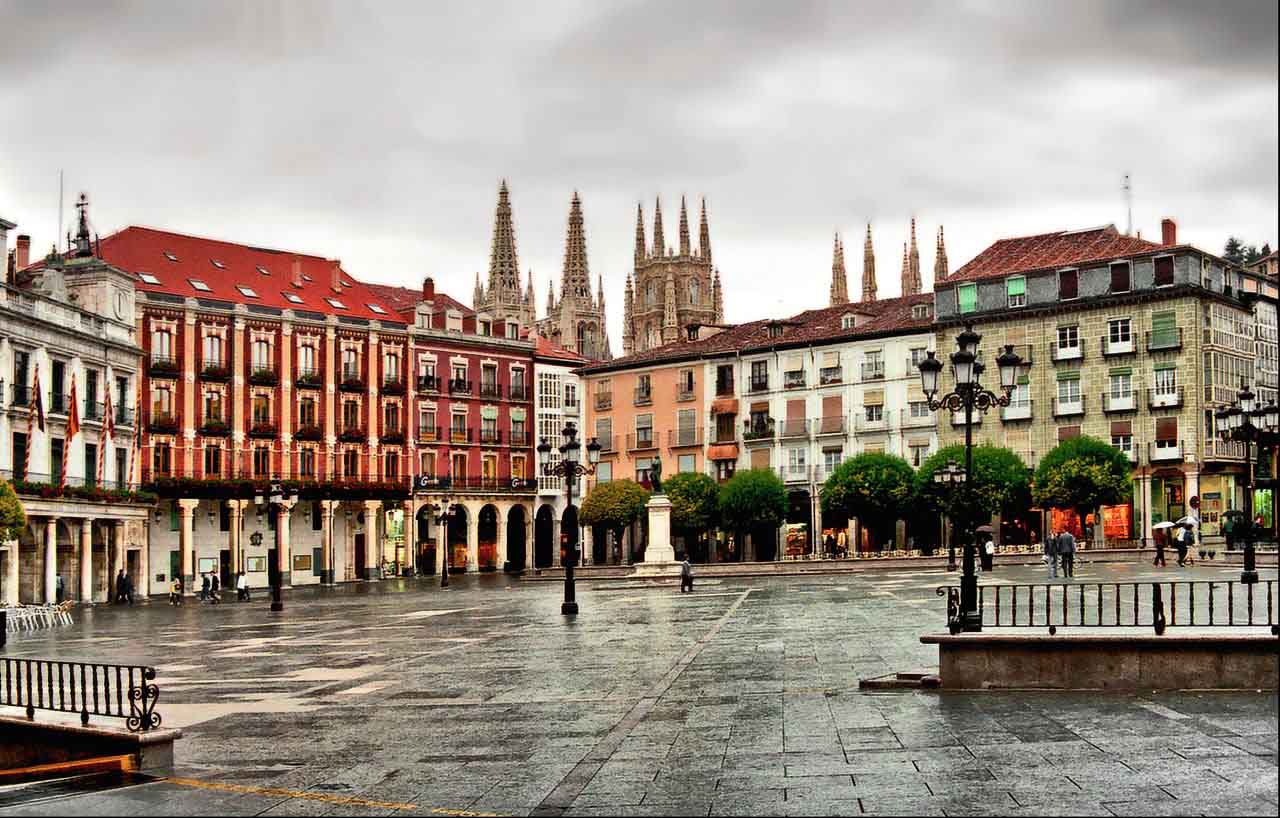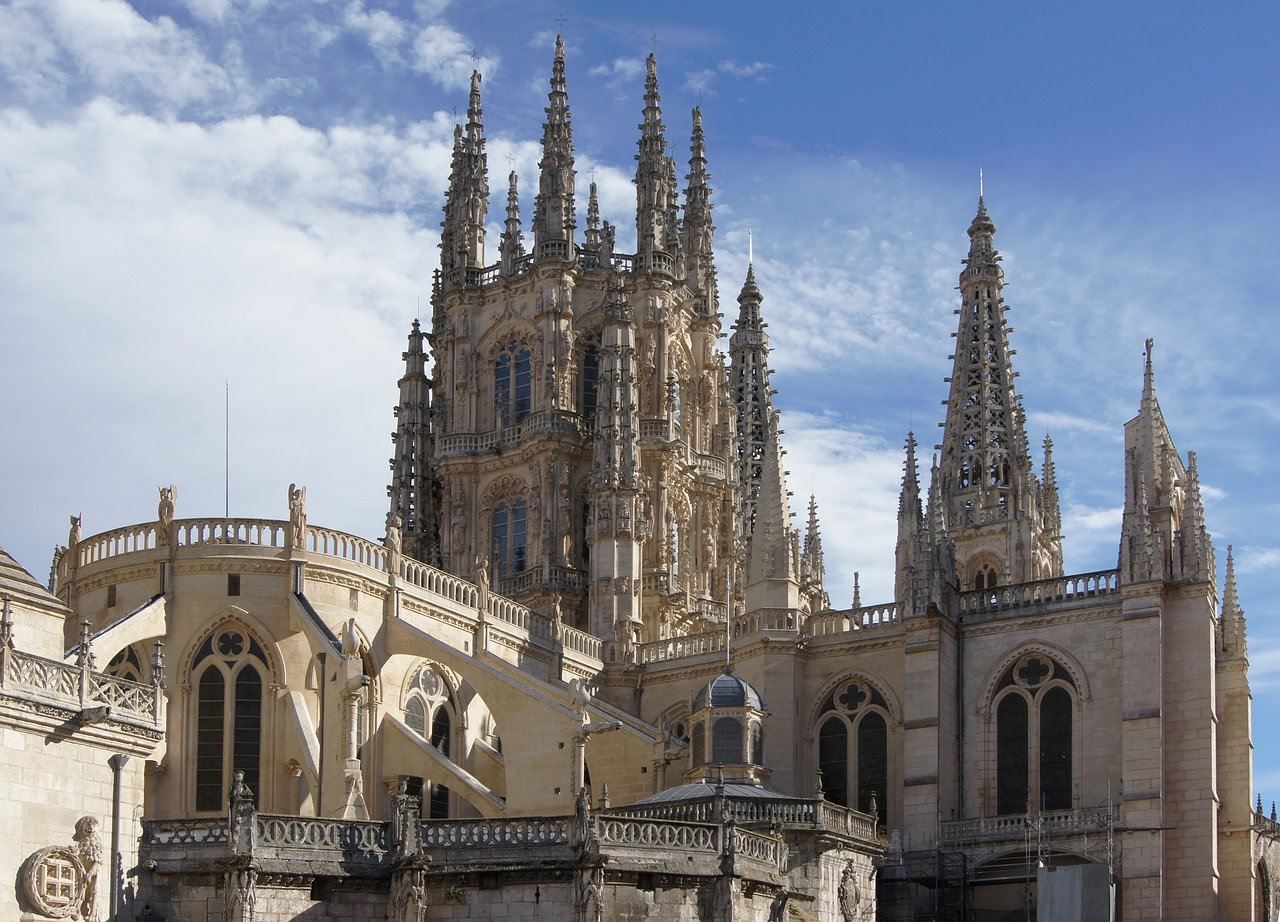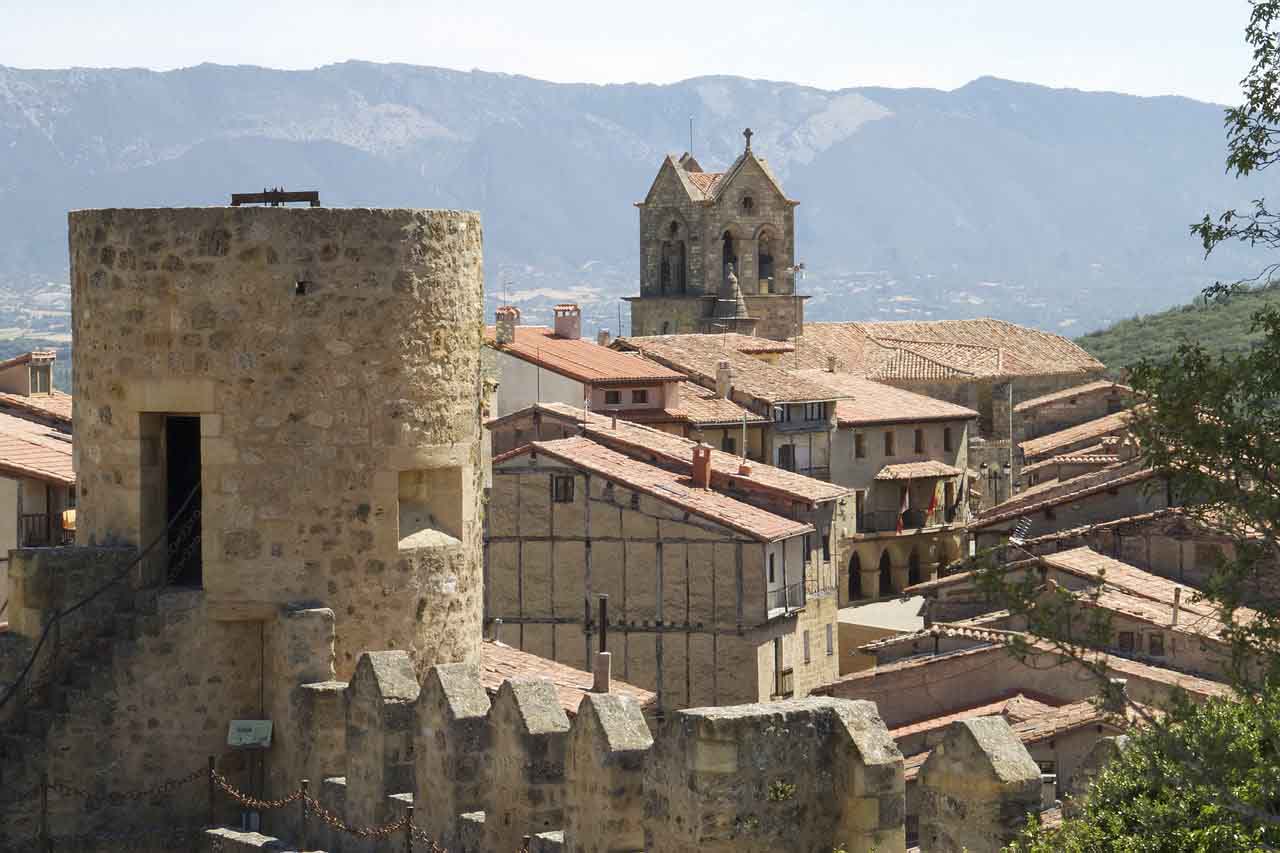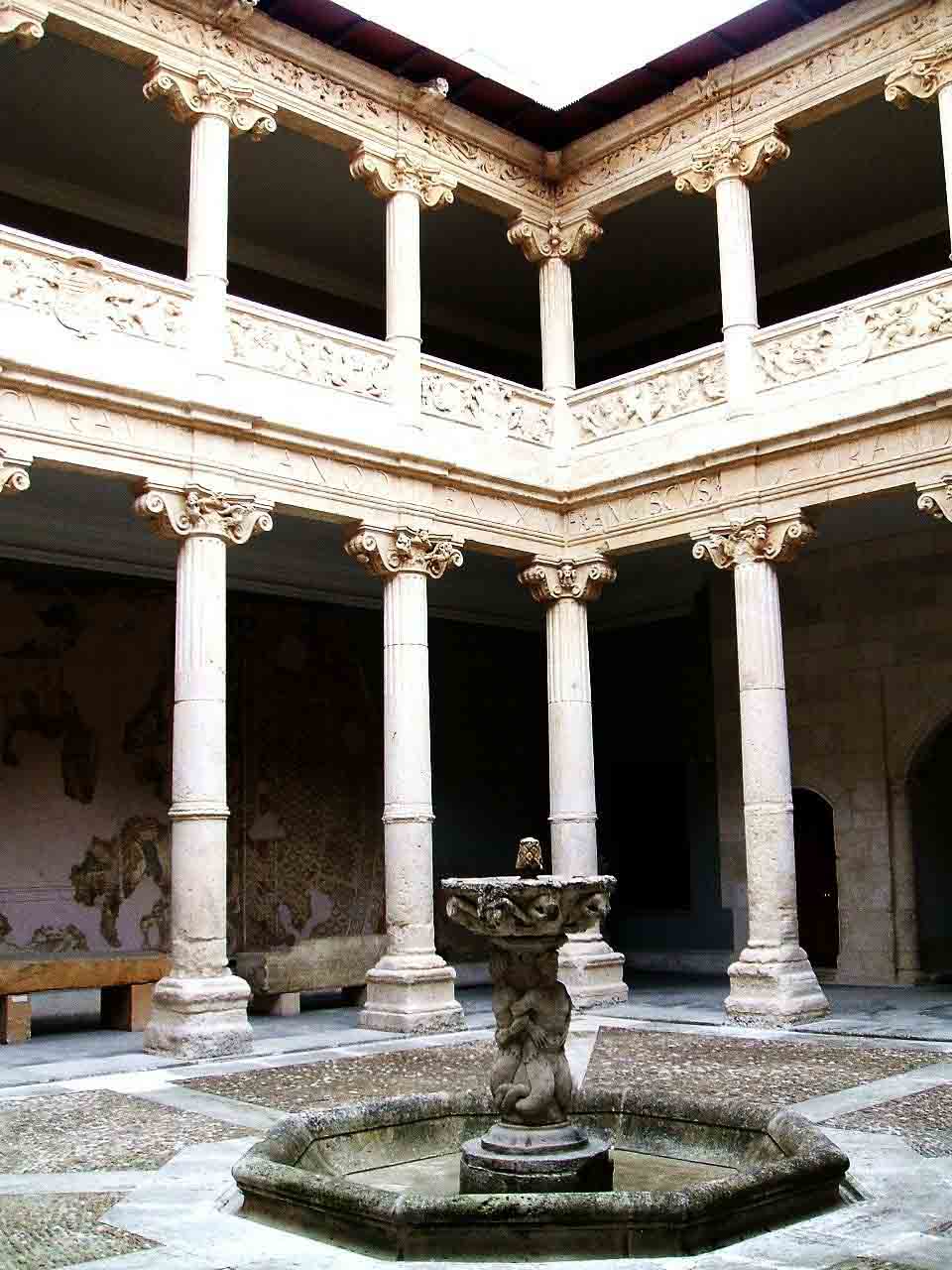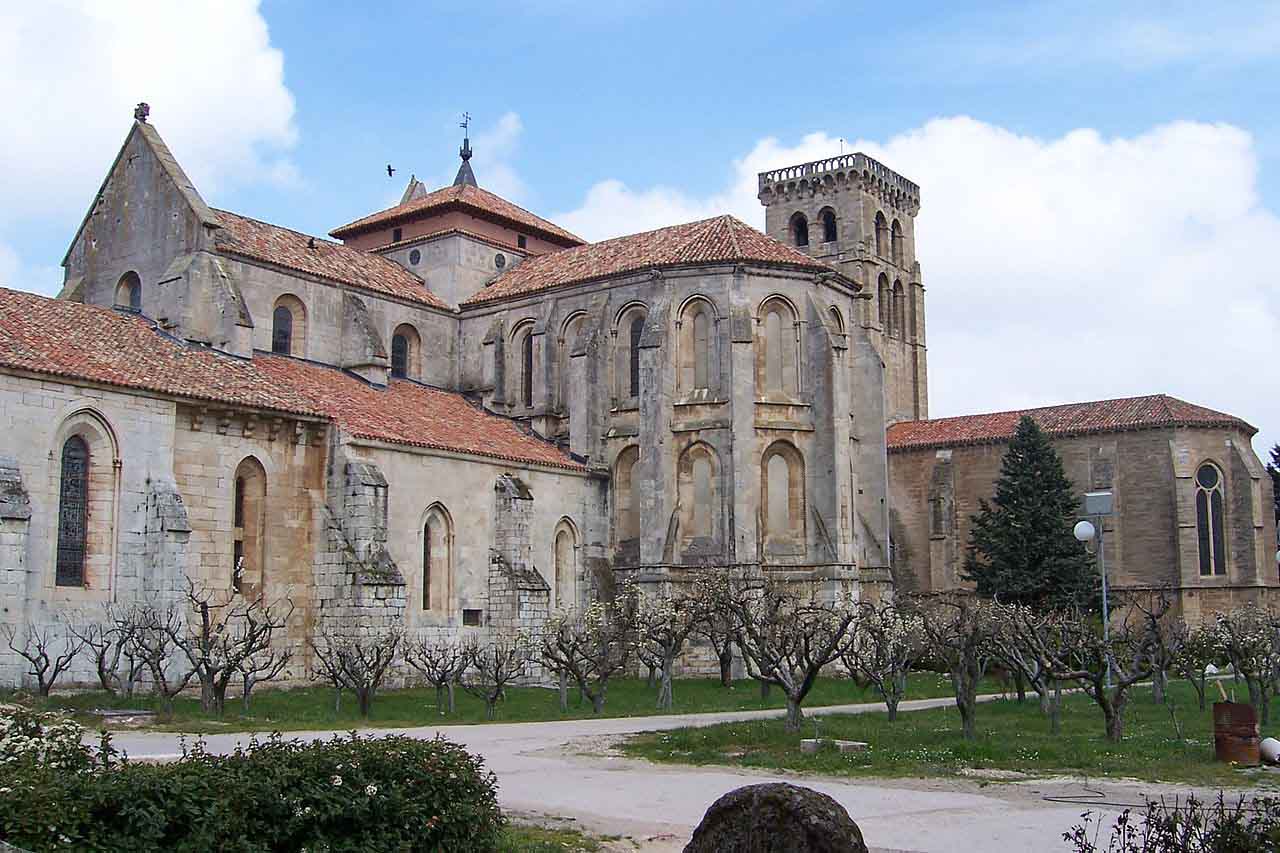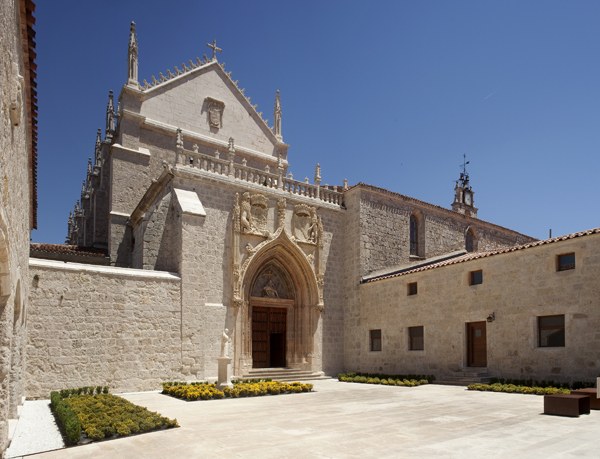A city with a great past and an unmissable stop on the Camino de Santiago. Two days in Burgos, represent the right compromise to be able to visit the main sites and monuments.
TWO DAYS IN BURGOS: DAY 1
How to remain impassive before the splendid Cathedral, whose spiers can be seen from afar? Just from the wonderful Gothic building, we recommend starting your visit. It is located in Plaza de Santa María, right in the center and is easily reached on foot.
The splendid Arco de Santa Maria that precedes it, represents the ancient gateway to the city. Built in the sixteenth century in honor of Charles V, with side towers, and seven statues in the central body. It is really beautiful and perfectly preserved. It is possible to visit the interior, where temporary exhibitions are often set up. Going up, you can enjoy a splendid view of the city and the Cathedral.
Open Tuesday to Saturday, from 11:00 to 14:00 and 17:00 to 21:00; Sunday, from 11:00 to 14:00. Closed on Monday. Free entry.
Beyond the Arch, to the erge, majestic, the splendid Cathedral. It has been declared in the 1984 World Heritage Site by UNESCO. In fact, many of the altars, chapels and monuments located in the cathedral are of incredible historical and artistic interest. Truly an incredible and extraordinary architectural, pictorial and sculptural variety.
Splendid the two towers that rise to over 80 meters high at the sides of the Cathedral. At their summit, jagged spiers of the fifteenth century. On the main façade, there is the beautiful Porta del Perdón with statues representing the kings of Castile.
Inside you can admire the Port of the Sarmental. It is a splendid sculptural complex with the image of a Christ Pantocrator surrounded by the apostles and the evangelists. And, again, 19 chapels in which excellent works of goldsmith and non-gold art are kept.
Info, timetables and tickets, available at this link.
Not far away, at Calle de Fernan Gonzalez, the beautiful Iglesia de San Nicolás, It is a 15th century Gothic church not to be missed. The retable by F.de Colonia is magnificent. Absolutely not to be missed. Going up the road you reach the Solar of Cid. According to tradition, in this place was the home of Cid. The memorial dating back to the 1784, is the work of José Cortés.
At the top of the hill are the remains of the Castle overlooking the city. Of the Castle, built in the twelfth century by Alfonso VIII remains little: it was destroyed, in fact, in the 800 during the War of Independence. From the top of the hill you can enjoy a truly marvelous view over the city and the Cathedral. An incomparable view. The Castle, although almost completely destroyed, has a small display of artefacts and, above all, an interesting descent to the underground caves; beautiful visit to the ancient underground well. Reserved for those who do not suffer from claustrophobia.
The Castle is open all year round starting from 11:00. In the summer it closes at 21:00. On weekends and holidays, it generally closes at 19:00. From October to June, for weekdays, reservations are required through the official email, infoturismo@aytoburgos.es
It’s time for a break. If you want to stay around, El Vagón it’s a good solution, even just for refreshment. Our advice is to return to the center. In about 10 minutes you can get to the restaurant La Favorita, in calle Avellanos 8; a tavern with a good quality/price ratio. Excellent food and excellent service are, however, the business card de La Parrillaat Calle Huerto del Rey.
Photo ©, Jim Anzalone
Check out Plaza Mayor, picturesque and lively central square of Burgos. Ideal, above all, for a drink. Anyone wishing, could opt for a shopping break. Calle de Santander, is the central street with shops and stores. Better, in our opinion, a walk along the beautiful Paseo Espolón. Statues and fountains decorate this splendid and lively promenade, created in the 19th century. It is ideal, before spending the afternoon visiting the Museo de Burgos and of Museum of Human Evolution.
Along the Paseo, the splendid historic building of the Diputación Provincial de Burgos. The Estatua del Cid it is a splendid monument of the famous leader. Photo obligatory next to the majestic figure of the Cid on horseback, preceding the Puente de San Pablo. The bridge crosses the Rio Arlanzón, and welcomes 8 statues related to the figure of the Cid. The statues were made in the 50 years by Joaquín Lucarini who won a specially organized competition.
On the other side of the river is the Museum of Human Evolution. For many it is considered a must. The numbers do not deny what has just been written. It is, in fact, the most visited museum in the whole Castilla y Leon. The museum houses unique and extraordinary human remains and fossils from the nearby Atapuerca site. It was inaugurated in the 2010 and is part of the Complejo de la Evolución Humana, which includes, inter alia, the CENIEH research institute.
The exhibition is structured along the 4 levels of the building. The -1 level represents the true fulcrum of the visit, with the exhibition concerning the Atapuerca excavations. The 0 level is dedicated to Charles Darwin’s Theory of Human Evolution and to the History of Evolution. On the second floor, visitors can admire the recreation of the three main ecosystems of human evolution.
The Museum is open from Tuesday to Friday, from 10:00 to 14:30 and from 16:30 to 20:00. Saturday, Sunday and holidays, from 10:00 to 20:00. Closed on Monday.
The full ticket costs 6,00€. Children up to 18 years, students with card, pilgrims can take advantage of the reduced rate of 4,00€. Retired, over 65 and under age 8 children DO NOT PAY.
Kanoa signals FREE ENTRANCE every Wednesday afternoon, and Tuesday and Thursday after 19:00.
For all the info, you can consult the official website from this link.
Photo ©, Zarateman
The Museo de Burgos, also known as Provincial Archaeological Museum, is housed in two splendid and distinct 16th century aristocratic residences. It is about Casa de Mirandaand Casa de Íñigo Angulo. The first building is home to the prehistoric and archaeological section. Are exhibited various findings of necropolis, findings dating back to the fourth century, objects and ancient treasures. Paintings from the 15th and 16th centuries, and works from the Baroque period.
La Casa de Íñigo Angulo, it welcomes, instead, the section of Fine Arts. You can visit an important collection of objects and works ranging from Mozarabic to the present day. The 12th century Frontal de Silos and the 15th century Passion of Oña stand out. The collection of paintings and retables from the 16th and 17th centuries is also noteworthy.
The Museum observes the following times:
From October to June: Tuesday to Saturday, from 10:00 to 14:00 and 16:00 to 19:00; Sunday from 10:00 to 14:00. Closed on Monday. From July to September: from Tuesday to Saturday, from 10:00 to 14:00 and from 17:00 to 20:00; Sunday from 10:00 to 14:00. Closed on Monday.
The admission ticket costs 1€. FREE for under 18, over 65, students with a valid card.
For the evening, Hamburgesería Isla, is ideal for spending the right enjoying excellent sandwiches with local meat. It is located on the other side of the river, well located.
Burgos, among other things, is a university city, very popular with young people. Thanks to this, it is particularly lively and youthful. Calle de la Puebla, is a rather central street where you can spend your evenings, and after dinner, between drinks. To the Café Marmedi you can enjoy excellent mojitos while, a Tirolina you can drink listening to good rock music; to the Bardeblásinstead, you can listen to alternative music until late in the evening.
At the end of the road, Casa del Cordón, is a fifteenth-century building, built by the will of the constable of Castile. It was here that the Catholic Kings received, in the 1495, Christopher Columbus, returning from his second journey from the Americas.
TWO DAYS IN BURGOS: DAY 2
Photo ©, Lourdes Cardenal
Outside the city walls stands the splendid Monasterio de las Huelgas, an abbey built at the end of the 12th century. It was erected by the will of Alfonso XIII of Castile, in the place where stood “Las Huelgas del Rey“, the ancient residence of the sovereigns. Under the direct jurisdiction of the abbot of Cîteaux, he was destined to welcome the noblewomen; in a short time, it became one of the richest religious bodies in all of Castile. Today, the Cistercian women’s monastery is a national monument. Not to be missed, inside, the abbey church, in Gothic style and the Pantéon Real; here there is a sarcophagus of the 200 and the tombs of Alfonso VIII and his wife Eleonora, Alfonso VII, Sancho III, Henry I, Alfonso X and numerous members of the royal family. History, art and spirituality blend perfectly in this truly evocative place.
The monastery is open Tuesday to Saturday, from 10:00 to 13:00 and 16:00 to 18:00; Sunday, from 10:30 to 14:00. Closed on Monday. The admission ticket costs 6,00€. Admission is FREE every Wednesday and Thursday afternoon.
More info through this link.
In ‘200, to the west of the complex, the Hospital del Rey. The structure was intended to accommodate pilgrims to Santiago de Compostela. It was entrusted to the authority of the abbess and of the monastery. The building, today, is inside the Campus de San Amaro of the Universidad de Burgos. The university campus is located about 800 meters from the Abbey, going west.
Before the last stop of this fantastic Two days in Burgos, the ideal is a walk along the beautiful Parque de la Isla. A long and pleasant walk in the green, among trees, fountains and reconstructions of ancient architecture. Really relaxing.
The archaeological site of Atapuerca is about 20 kilometers from the city. Given the proximity, it is impossible to think of not visiting one of the most important paleontological sites in all of Europe. Buses to Atapuerca leave from the Estación de Autobuses de Burgos. Just take the BURGOS – CERRATÓN de JUARROS line.
Regarding the beautiful site, you can consult our special available at this link.
Copyright, www.pmrmaeyaert.com
Alternatively, about 3 km from the center of Burgos, you can opt to visit the beautiful monastic complex of the Cartuja de Miraflores. The Charterhouse was founded by King John II, with the desire to build a Pantheon for himself and his wife. The complex was completed during the reign of Isabella la Cattolica. Today, it is possible to admire the splendid mausoleum of John II of Castile and his wife.
Admission is always FREE. La Certosa is open from Monday to Saturday, from 10:15 to 15:00 and from 16:00 to 18:00; Sunday from 11:00 to 15:00 and 16:00 to 18:00.
Burgos is one of the magical and unmissable places on the Camino de Santiago. Have a good trip from Kanoa
